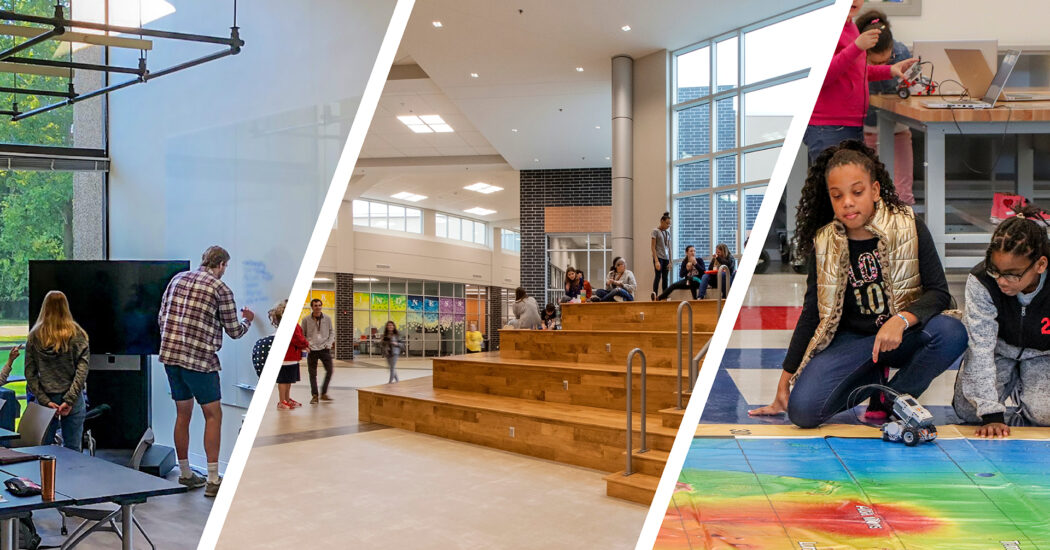Preserving Architectural Heritage Through Urban Renewal
-
Category
Achievements, Studio-Higher Ed, Perspectives, Innovation, Leadership -
Posted By
Lisa Gomperts -
Posted On
Oct 09, 2023
In the ever-evolving world of real estate, adaptive reuse is poised to become the dominant force in the industry over the next decade. In fact, experts predict that a staggering 90% of real estate projects will involve adaptive reuse instead of new construction. This seismic shift is driven by several compelling factors that make it a practical, sustainable, and culturally significant choice. Let’s examine this in greater detail.
The Rise of Adaptive Reuse
- Sustainability: As the world grapples with environmental concerns, adaptive reuse offers more eco-friendly alternatives to new construction. Reusing existing buildings reduces carbon emissions and decreases waste that ends up in landfills.
- Budgets: Repurposing existing structures can save on construction costs and time. This approach allows for the allocation of resources to other critical aspects of a project, such as design and innovation.
- Preservation: Redeveloping historic buildings for new uses means that the past continues to thrive in the present. These structures tell stories of bygone eras and contribute to the unique character of communities.
- Opportunity: From big-box stores facing closure from the rise of online retail to factories and industrial spaces with untapped potential, adaptive reuse transforms these spaces into valuable assets, breathing new life into underutilized real estate.
- Redevelopment: Transforming old buildings into vibrant, functional spaces can reinvigorate neighborhoods and foster positive social interactions.
Adaptive Reuse in Different Contexts
- Big Box Stores: Big-box stores, once the giants of retail, are now facing challenges from online shopping and the effects of the pandemic. Many of these spaces are ripe for adaptive reuse with their large square footage, ample parking, existing infrastructure, flexible open spaces, and high volume. While they may lack in natural light and architectural intricacies, their adaptability makes them prime for transformation.
- Factories/Industrial: Comprising roughly 20% of projects under construction, these spaces offer unique opportunities with spacious layouts, parking, existing infrastructure, flexibility, opportunities for natural daylight due large expanses of glass, and desirable locations. However, potential hazards from materials and historical overlays can pose challenges.
- Office Buildings: The demand for office space in desirable neighborhoods remains attractive, and there’s a significant need for housing. Converting former office spaces into modern urban environments aligns with the changing landscape. But the often-square footprint can be challenging limiting access to windows and the need for plumbing, and HVAC work in older structures can be less desirable.
Making Adaptive Reuse Successful
With adaptive reuse becoming a sought-after design option, it’s crucial to ask the right questions and follow a strategic approach before undertaking this type of project. To know you’re on the right track, consider the following:
- Does the project align with your organization’s vision and mission?
- Is this building a “Sacred Cow,” meaning it has historic or emotional connections to the community?
- Conduct a thorough facility assessment and consider factors like structural integrity, floor-to-floor heights, and more.
- Identify key stakeholders and secure their support.
- Determine the potential return on investment.
- Confirm that the chosen location is suitable for the intended use.
- Understand specific requirements and how the building can accommodate them.
- Be aware of approval processes and permits required.
- Assemble a team with the expertise and experience needed for success.
- Explore various funding options, including federal, state, local, and private sources.
Our Success with Adaptive Reuse
To fully grasp our expertise in adaptive reuse, read about some of our recent project success stories.
Scott College of Business at Indiana State University
Clark H Byrum School of Business
Alumni House at Marian University
Ivy Tech Illinois Fall Creek Center
Adaptive reuse is transforming urban landscapes and reshaping the built environment. By asking the right questions and following a strategic approach, we have the expertise and the knowledge to help Owners meet their unique needs while honoring the past and paving the way for a more sustainable future.
Discover the 6 considerations for adaptive reuse.
* Excepts from this blog are from the MAPPA presentation “Teaching Old Buildings New Tricks.”







